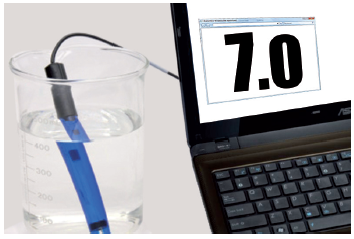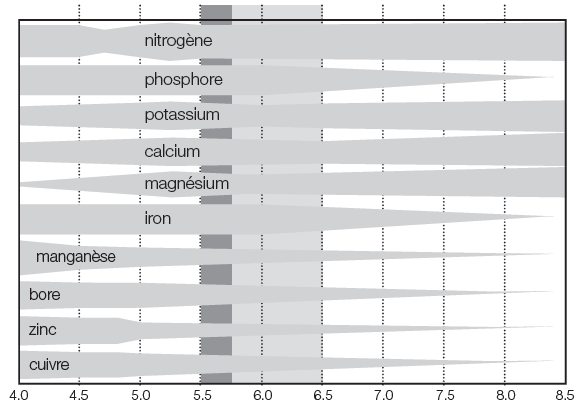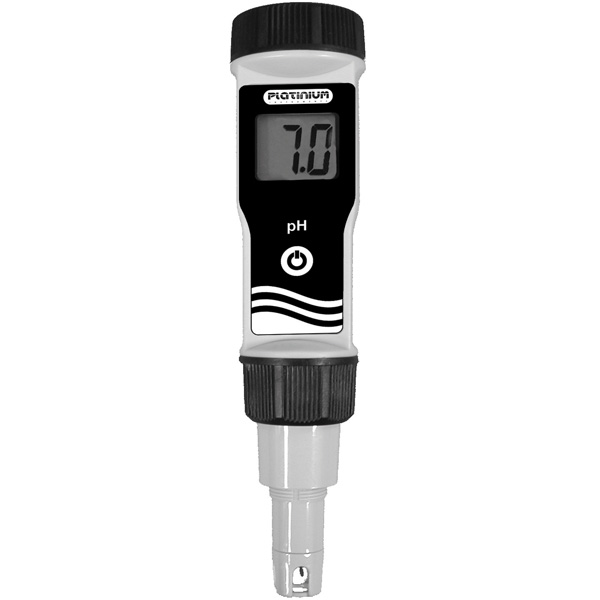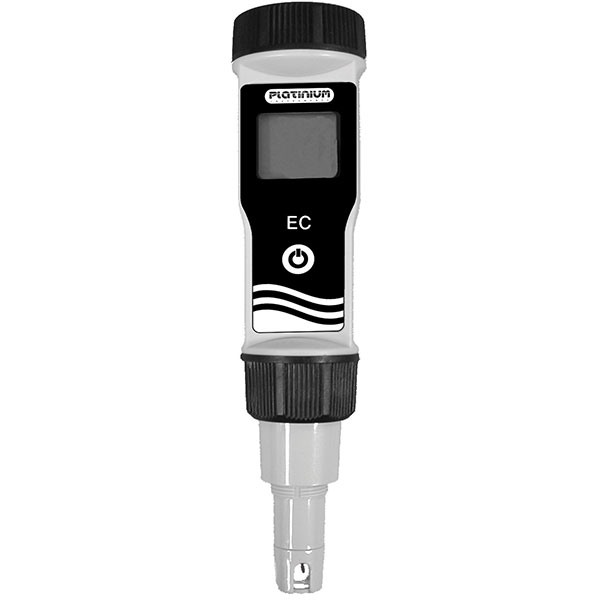In hydroponics, or soil, water control is essential.
In hydroponics, many controls are essential for the good development of your plants. A pH tester allows you to evaluate the acidity of the soil and the nutritive solution. An EC tester measures the level of fertilizer in the solution. A hygrometer allows you to evaluate the humidity level.
pH = HYDROGEN POTENTIAL
The hydrogen potential (or pH) measures the chemical activity of hydrogen ions (H+) in solution. More commonly, pH measures the acidity or basicity of a solution. It is important to monitor it because it plays a determining role in the availability of nutrients that the plant needs to assimilate.
The pH is measured on a scale of 0 to 14; 7 being neutral. It is essential to control it in soil or hydroponic cultivation because it optimizes the assimilation of nutrients by the roots. A pH meter allows to measure the pH of a nutritive solution while taking into account the slight acidity of the fertilizers and additives used. The pH is managed with the help of pH regulators: a pH down solution (acidifying the water) and a pH up (liquid making the water more alkaline or basic). In soil culture, the water used for irrigation is set at a pH value of 6.2 to 6.4 during growth and 6.6 to 7.0 during flowering. More acidic in hydroponics, the pH of the water is 5.6 to 6.4 when growing and 6.0 to 6.5 when flowering. Check the pH at least every two days.
Thus, in an aqueous medium at 25°C, a solution with a pH :
* less than 7 is acidic (a.);
* greater than 7 is basic (b.);
* equal to 7 is neutral (n.).

EC = ELECTROCONDUCTIVITY
An Ec tester measures the mineral content of the nutrient solution, which can be measured by its electro-conductivity. Pure water (like rainwater) or distilled water does not conduct electricity. Adding salts is the only way to make water conductive. Fertilizers added to the nutrient solution increase its electrical conductivity. Testing the EC every day is therefore essential in order to know whether or not to add fertilizer, and in what dosage.
Measuring and dosing
When theEC increases, it means that the plant has consumed more water than fertilizer. It is therefore necessary to lower the EC by adding water. Conversely, a too low EC indicates a lack of fertilizer in the solution. Check the EC the EC should be measured once a day in order to ensure that the plant's cycles run smoothly. Generally, EC measurements range from 0.8 to 1.4 during the vegetative stage, and from 1.4 to 1.6 during pre-flowering to 1.6 to 2.2 (peaking at 2.6) as the plants develop. The minerals present in the fertilizers emit an electric current that the EC-meter quantifies. As the nutrient needs of the plants grow, the EC level increases proportionally. Moreover, the acceleration of the metabolism (important light radiation compared to the surface to be illuminated, CO² enrichment...) of the plant requires a consequent follow-up of the EC values. An EC meter indicates the general value of imperfections and minerals contained in the water, without specifying specifically the concentration of macronutrients (N, P, K) and micronutrients (Ca, Mg, S, Cu...) diluted in the water. The nutrient solution and the water in the hydroponic tanks must be changed once a week in order to renew the macronutrients and micronutrients correctly. In hydroponics, many controls are essential for the good development of your plants. A pH tester allows you to evaluate the acidity of the soil and the nutritive solution. An EC tester measures the level of fertilizer in the solution. A hygrometer allows to evaluate the humidity level.
*nitrogen / phosphorus / potassium / calcium / magnesium / iron / manganese / boron / zinc / copper
TDS (Total Dissolved Solids)
Determines the total amount of mobile charged ions, including minerals, salts, metals, cations or anions dissolved in water. It includes everything in the water except the pure water molecule (H2O) and suspended solids. The lower the TDS level, the purer the water.
Fertilizers
In soil, testing the EC of the water that has passed through the pots is interesting to prevent possible over-fertilization of nutrient salts, accumulated around the roots due to poor drainage. If this is the case, the soil should be rinsed with pH-adjusted water, or with an enzymatic solution (living bacteria breaking down dead roots and nutrient salts to make them available to the roots). The EC measurement is temperature sensitive. Good quality testers are equipped with an ATC system = temperature compensated, manual or automatic. Taking the temperature into account is essential to obtain a relevant measurement. The temperature of the nutrient solution must be the same as in the tank.
Maintenance
EC testers have a life span that depends on how well they are maintained. After each use, keep the probe moist and clean at all times. If the probe is corroded, the readings are no longer reliable. A new probe or tester must be purchased. It is best to check the EC of your tap water, the nutrient solution and the drainage water flowing out of the growing medium on a daily basis.
Find all our tips for your indoor growing:
- Tips for indoor growing: Light
- Tips for indoor growing : Air
- Tips for indoor growing : The Substrate
- Growing tips for indoor plants : Water and fertilizers
- Growing tips for indoor plants : Germination and Cutting
- Growing tips for indoor plants : Growth
- Growing tips for indoor plants : Flowering
- Growing tips for indoor plants : The growing room
- Tips for indoor growing : Systems
- Growing tips for indoor plants : Water control
- Growing tips for indoor plants : Aquaponics
- Growing tips for indoor plants : Accessories



